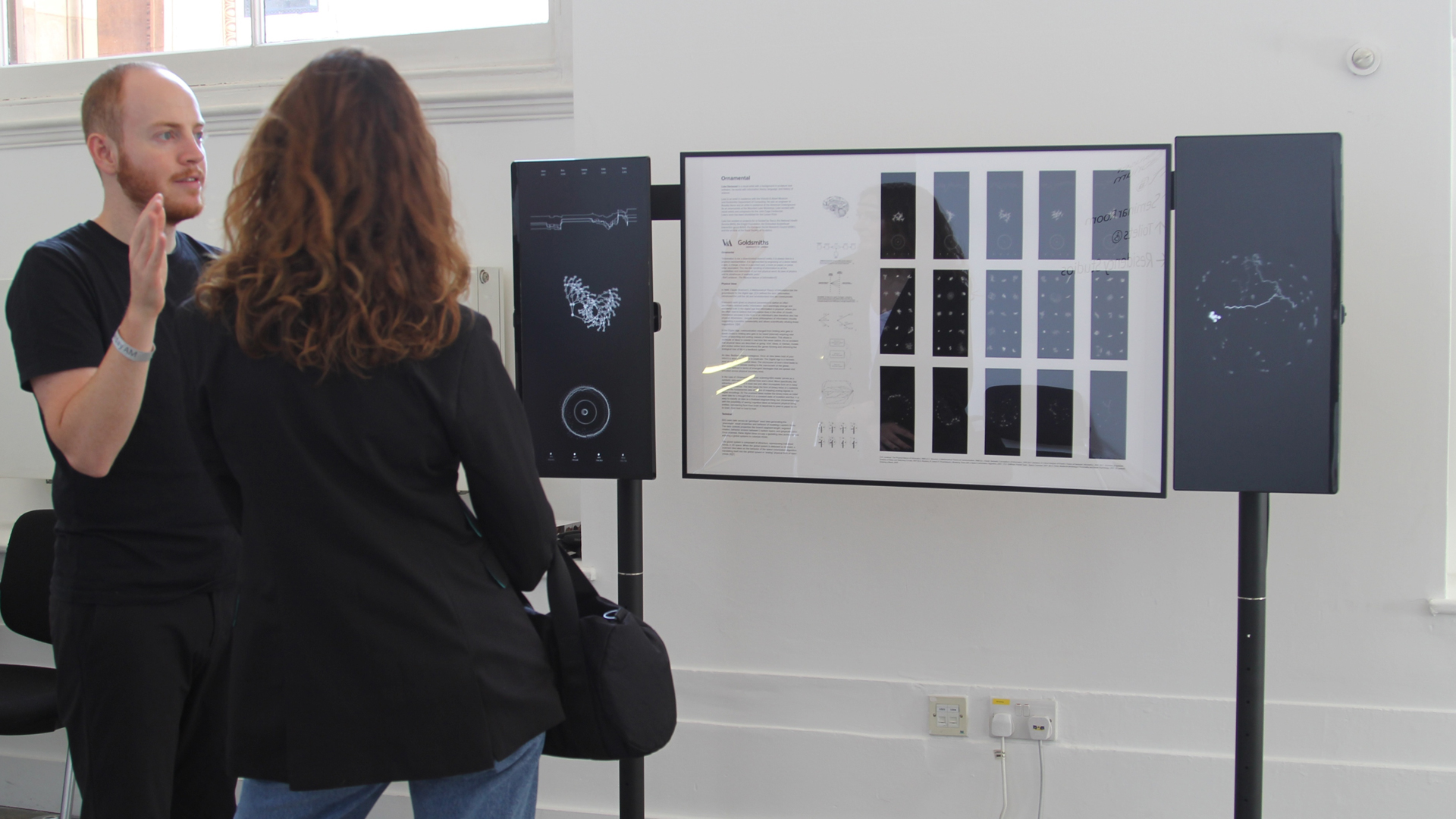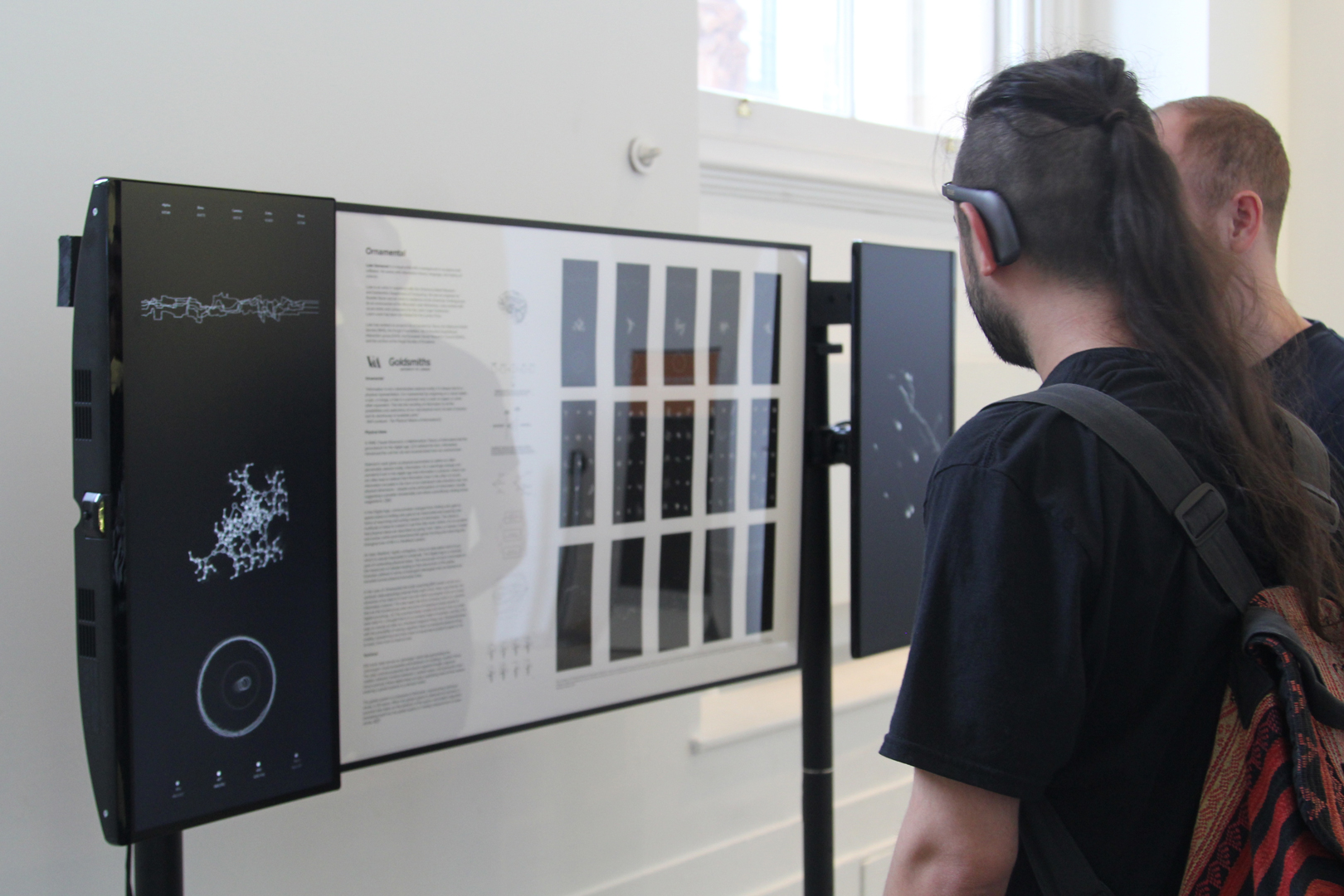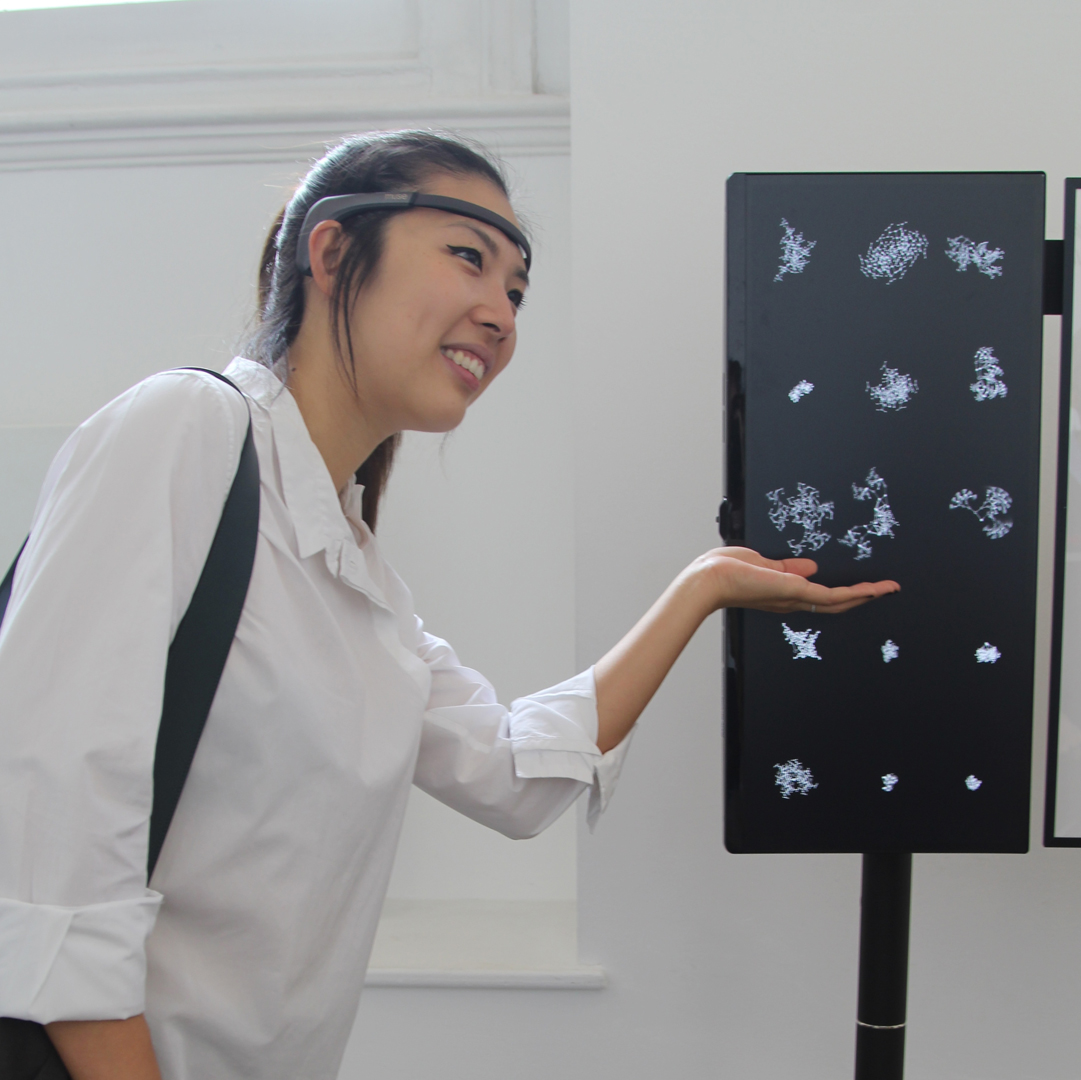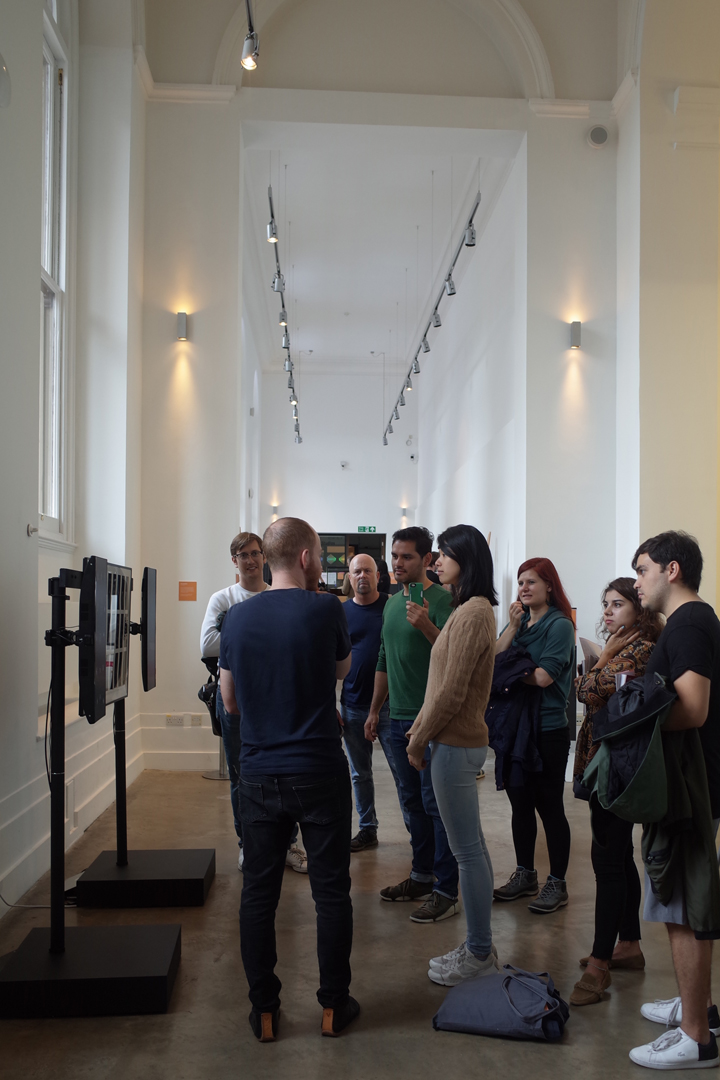Luke Demarest: Ornamental
Artist(s):
Title:
- Ornamental
Exhibition:
Creation Year:
- 2019
Medium:
- Human Brains, EEG Headset, 2 Monitors, Processing computer code.
Size:
- 2 meter X 2 meters X 1 meter
Category:
Artist Statement:
In a reflection on data materialism in the digital age, “Ornamental” creates an emergent system of generative visualizations from live EEG brain data scanned in the gallery. This work was produced during an artist residency with the Victoria and Albert Museum and Goldsmiths, Department of Computing.
Extended Summary:
In 1948, Claude Shannon’s A Mathematical Theory of Information laid the groundwork for the digital age. It defined the term information, introduced the unit bit, and revolutionized how we communicate. Shannon’s work gives us physical parameters to define an often perceivably abstract entity: information. It’s a seemingly strange and wonderful truth in the digital age that information is physical- where you are often lead to believe that information lives in the ether of clouds. In a reflection on data materialism in the digital age, Ornamental creates an emergent system of generative visualizations from live EEG brain data scanned in the gallery. The brain scanning EEG reader serves as a symbolic data-extracting channel from one’s mind. More specifically, the extraction of an idea in it most raw and often incomplete form on a noisy information channel. The idea takes the form of binary trees or L-systems that are the fundamental data structure of mapping analog signals to digital encodings. The scanned ideas mutate the binary trees as initial seed data for a thought that is in a constant state of mutation and flux. It is easy to classify an idea as a finalized stagnant thing, but Ornamental plays with the possibility of seeing cognitive ideas as temporal physical living entities, transferring form from brain to keystroke to pixel to paper to iris to brain, from host to host to host. This work was produced during an artist residency with the Victoria & Albert Museum and Goldsmiths, Department of Computing.
Other Information:
Ornamental “Information is not a disembodied abstract entity; it is always tied to a physical representation. It is represented by engraving on a stone tablet, a spin, a charge, a hole in a punched card, a mark on paper, or some other equivalent. This ties the handling of information to all the possibilities and restrictions of our real physical word, its laws of physics and its storehouse of available parts.” – Rolf Landauer, The Physical Nature of Information [1] Physical Ideas In 1948, Claude Shannon’s A Mathematical Theory of Information laid the groundwork for the digital age.[2] It defined the term information , introduced the unit the bit , and revolutionized how we communicate. Shannon’s work gives us physical parameters to define an often perceivably abstract entity: information. It’s a seemingly strange and wonderful truth in the digital age that information is physical- where you are often lead to believe that information lives in the ether of clouds. Information encoded in the form of an individual’s idea therefore also has physical dimensions -despite some philosophers of information cloudily suggesting a possible immateriality and others scientifically refuting those suggestions. [3][4] In the Digital Age, communication changed from limiting who gets to speak (radio) to limiting who gets to be heard
(internet) requiring new forms of searching and sorting masses of information. This allows a multitude of ideas to coexist in real time like never before. It’s no accident that physical ideas are described as going ‘viral’. Ideas, or memes, mutate and evolve online (and elsewhere) like genes forming and reforming the biological tree of life in a feedback system. An idea. Resilient, highly contagious. Once an idea takes hold of your mind it is almost impossible to eradicate. The Digital Age is a memetic pool of contending physical ideas. The microcosm of one’s mind leads to the mesocosm of debate leading to the macrocosm of the globe. Evolution defined in terms of emergent ideologies that are spread and encoded across physical boundary lines.








